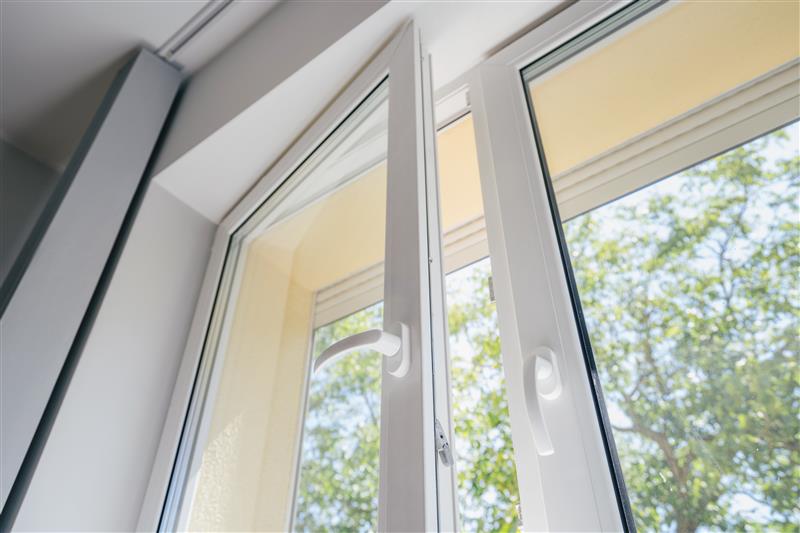
Double-pane windows are a common feature in today’s homes, prized for their insulation and energy-saving benefits. But they can also be a source of confusion, especially when the space between the panes starts to look foggy or dirty.
If you’ve ever asked yourself how to clean inside double-pane windows, you’re not alone. That cloudy look often means the seal between the panes has failed, letting in moisture or debris you can’t reach with typical cleaning methods.
In this guide, we’ll explain why this happens, what you can (and can’t) clean yourself, and how to keep the visible surfaces looking crystal-clear using the proper techniques and tools.
What’s Inside a Double-Pane Window?
To understand why fogging occurs and why cleaning between the panes is challenging, it is helpful to know how double-pane windows are constructed.
Most double-pane windows include:
● Two panes of glass, separated by a spacer
● A sealed air or gas-filled space, often filled with argon or krypton for insulation
● A perimeter sealant, designed to keep out moisture and air
● A desiccant inside the spacer, which absorbs any trace moisture that might sneak in
When everything is intact, this setup works well. But over time, exposure to heat, cold, or aging materials can cause the seal to break down. Once that happens, moisture and particles can enter the space between the panes, leaving behind foggy patches or streaks you can’t reach with a standard cleaner.
Can You Clean Inside the Sealed Space?
In most cases, no. You cannot access the space between the panes without breaking the seal or removing the glass. This issue is often referred to as permanent fog. Once the seal fails, moisture gets trapped between the layers and cannot be wiped away like a traditional glass surface.
You have a few realistic options, depending on how severe the fogging is:
● Clean the visible surfaces only. Cleaning the outer panes is the simplest and most affordable option, especially when fogging is minor or limited to just a few windows.
● Call a professional window repair service. Some specialists can drill and reseal double-pane windows or replace just the glass unit.
● Replace the window. If the fogging is widespread or the frames are damaged, complete replacement may be the most effective long-term fix.
The best path forward depends on your window’s condition, your budget, and how much the fogging affects your view. Before considering repairs or replacements, it helps to make sure the outer surfaces are as clean as possible. That way, you know exactly what you’re working with and how much of the issue is inside the seal.
Option 1: Clean the Exterior Surfaces Only
While you cannot clean between the panes, you can still clean the inner and outer-facing glass surfaces. Many people mistake smudges or streaks on these surfaces for seal failure, so it is worth giving the glass a proper clean before assuming the problem is inside.
Tools You’ll Need:
● Lint-free microfiber towels (avoid paper towels or cotton rags)
● Ammonia-free glass cleaner
● Optional: glass cleaning wand for hard-to-reach corners
Recommended Product:
Invisible Glass works well for residential windows. It contains no soaps, scents, or dyes that leave behind residue, and it delivers a streak-free finish when used with the proper technique.
Glass Cleaning Tips for Best Results❖ Start with dry dusting. ❖ Spray the towel, not the glass. ❖ Wipe in straight lines. ❖ Buff with a second dry towel. |
❗If you're cleaning tall or hard-to-reach windows, the Invisible Glass Reach & Clean Tool can help. It includes a flexible triangular head and an extension pole, making it easier to clean corners and upper panes without straining or using a ladder.
Option 2: Professional Defogging Services
If you see actual condensation or fog inside the panes that doesn’t wipe off from the surface, that usually means the window’s seal has failed. In this case, professional window restoration may be an option.
Companies that specialize in window defogging will:
● Drill a small hole in the glass unit
● Inject a drying agent or vacuum out moisture
● Reseal the opening with a clear patch or vent
This process can temporarily clear up the window and is often less expensive than a complete replacement. However, it’s not a permanent solution, and results can vary depending on the severity of the seal's failure.
Option 3: Glass Unit or Window Replacement
If seal failure is widespread or your windows are older, replacing the entire glass unit (also known as an IGU, or Insulated Glass Unit) may be the most effective solution. Some companies can replace just the glass portion without removing the entire frame, keeping costs and disruption to a minimum.
Complete window replacement becomes necessary if:
● The window frame is also damaged or warped
● You’re upgrading to more energy-efficient models
● The cost of repeated defogging isn’t justified
Preventing Seal Failure in the Future
Double-pane windows are built to last 10 to 20 years or more, but certain habits can help you extend that lifespan. Use the tips below to maintain window clarity and prevent premature seal damage.
|
✅ Do This |
❗ Avoid This |
|---|---|
|
Keep windows closed during storms |
Power washing directly against window edges |
|
Maintain stable indoor temperatures |
Rapid indoor-outdoor temperature swings |
|
Inspect caulking and flashing each year |
Letting caulk or trim degrade without resealing |
|
Use soft cloths and ammonia-free cleaner |
Applying harsh chemicals or abrasive tools on the edges |
How to Know If Your Fog Is Really Between the Panes
Before assuming your window has a failed seal, take a moment to confirm the source of the haze. In many cases, what looks like interior fog is residue or streaking on the surface.
|
🔍 What to Check |
❗ What to Avoid |
|---|---|
|
Clean both sides of the glass with a streak-free, ammonia-free cleaner |
Using ammonia or vinegar near window edges, which can degrade sealants |
|
View the glass at an angle in natural light to locate the haze |
Attempting to drill or disassemble the window without proper training |
|
Feel for moisture. If it cannot be wiped away, the seal may be compromised |
Ignoring recurring fog, which can lead to energy loss and further damage |
Clearing Up the Confusion Around Double-Pane Windows
Cleaning the inside of a double-pane window isn’t always possible. If fog or residue is trapped between the panes, it usually means the seal has failed. At that point, your best options are professional repair or full replacement.
That said, what looks like interior fog is often just buildup on the glass surfaces. A thorough surface cleaning with the right tools and a high-quality product like Invisible Glass can restore clarity and rule out unnecessary repairs.
Double-pane windows are a wise investment for comfort and energy efficiency. With regular care and the proper cleaning approach, you can keep them looking clear and performing their best for years to come.



